Wonderful Whitby
Lythe
Lythe is a small village situated on the top of a very steep hill with a gradient of 1 in 4, approximately 4 miles northwest from Whitby. The name Lythe is derived from the Scandanavian word hlith meaning ‘slope’. There is a mention of Lythe in the Doomsday Book.
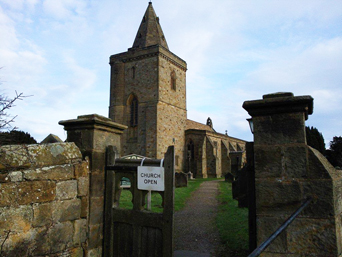
Lythe Church
At the top of the steep hill is the Church of England St. Oswalds Church, with medieval and anglo saxon connections. As early as the 10th century there were clear indications of funeral monuments on the land, and there is mention of a Viking burial site. A Norman Church was here initially, then a Medieval church, and throughout the centuries the church has been restored and rebuilt using some original stonework.
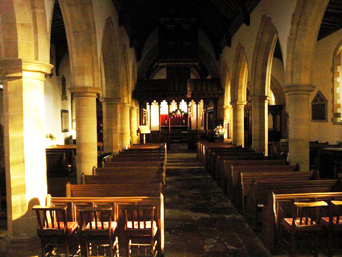
The interior of Lythe Church
At the Dissolution of the Monastries in 1534, St. Oswalds was granted to the owners of nearby Mulgrave Castle, but then reverted back to the monarchy in the reign of King Henry VIII. A former vicar of Lythe was John Fisher (later Cardinal John Fisher), but his stand against the King during the reformation led him to being executed in 1535. He was canonised in 1935.
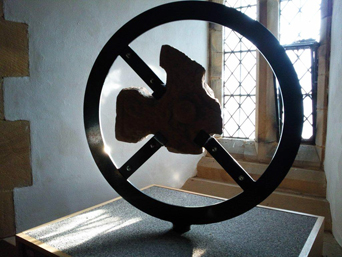
An exhibit within Lythe Church
The present church was rebuilt in 1910, by Sir Walter Tapper. In 2008 a permanent exhibition funded by The Heritage Lottery and Nortrail was opened by the Marquis of Normanby. This exhibition displays both the Anglo Scandinavian and the post conquest Anglo Norman stones. On display is a section of a Crosshead, a face on a cross but without a halo, so the carving may not necessarily represent Christ. An old stone coffin is also on display inside the church.
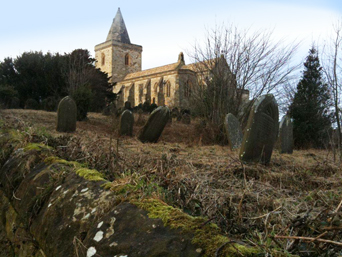
Lythe Church
Just south of the village is Mulgrave Castle, hereditary home of the Marquis of Normanby. It was built by Robert de Turnham in 1200 and converted to a Hunting Lodge in 1600. Mulgrave Castle has a varied history, in 1858 it was leased to Dalip Singh Sukerchakia the Last Maharajah of the Punjab, rumour has it that he had the Sandsend to Whitby road contructed because his elephants didn’t like sand between their toes!!!!!! Charles Dickens has holidayed there, have indeed members of the present royal family. The castle is not open to visitors but the gardens are, on advertised days.
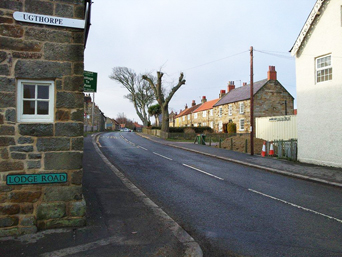
Lythe Village
The castle grounds contain the ruins of Foss Castle, a motte and bailey castle, built on a circular mound on the site of an even older wooden structure dating from 1071. It was said to be the home of the Giant Wade and his wife Belle. They had a castle in Pickering too, and it was said that Wade constructed a road over the moors ’Wades causeway’ to here, so that his wife could ‘hang out her washing’. The remains can still be seen today and have been the subject of some restoration by the English Heritage Fund.
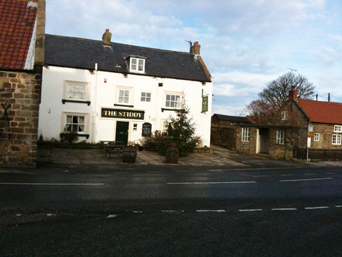
The Stiddy Pub in Lythe
The village of Lythe has a public house called ‘The Stiddy’ formerly The Red Lion. An ancient tradition of ‘Firing the Stiddy’ exists to celebrate events in connection with the Normanby family. An anvil is dragged from the Blacksmiths shop, upturned on its base and then a charge of gunpowder is placed on its base then set alight with a heated tip of long metal bar.
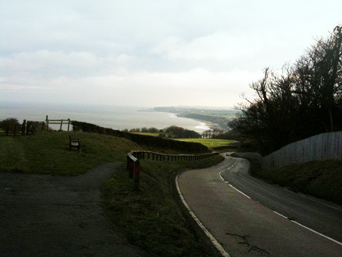
Lythe Bank with Sandsend below
A methodist chapel was built in 1822 but this is no longer functional. There is a garage repair shop, general store and post office, self-catering accommodation and public phone box. The Cleveland Way National Trail passes close to Lythe.
